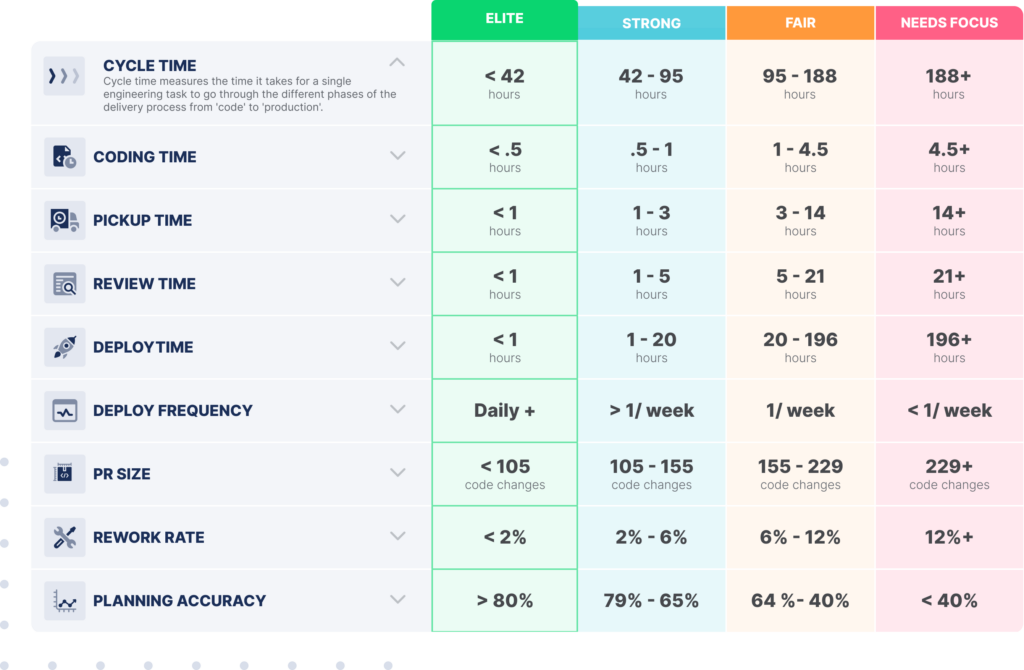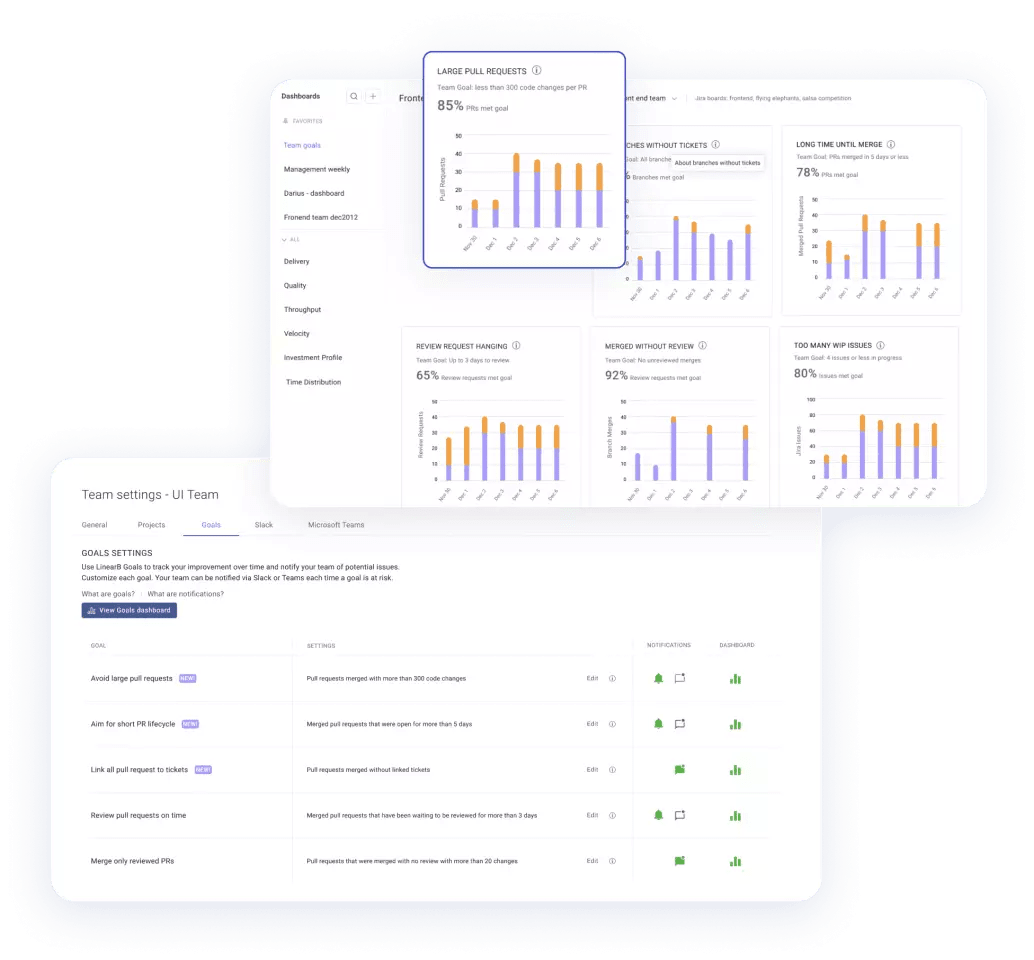The execs are hounding you about team efficiency and productivity. They want your teams to handle more work more efficiently. But how do you keep up the same level of productivity with a bigger workload? And how can you reassure your stakeholders that you have a grasp of where your org is, where they need to be, and how you’re going to get them there?
Our last article showed you how you can measure your org’s overall productivity, so if you missed that, go check it out. Now, we want to show you how you can improve developer productivity.
Table of Contents
How to Improve Developer Productivity
You’ll find a lot of opinions on how to improve developer productivity, and not all of them are bad. We’re particularly fond of ideas like setting dedicated study time and defragging dev calendars with tools like Clockwise.
Sure, these approaches help with time management (which is especially important when your teams are working remotely), but these types of improvement aren’t the holistic plan your stakeholders are looking for. So we’ve developed a 3-step strategy to get you rolling!
Step #1: Leverage Metrics to Improve Processes
Monitoring the most essential metrics in real time will improve your engineering organization’s productivity. And why is that? If you track key metrics—like cycle time and deployment frequency—you’ll identify the inconsistencies that affect your software development workflow.
For instance, in our Engineering Metrics Benchmarks study, we discovered that elite development teams are deploying small chunks of code to production at least daily, if not multiple times a day.

If your teams are struggling to deploy changes daily, this could reveal that they haven’t adopted continuous delivery yet. And this gives you an opportunity to advocate for CI/CD tool investment.
Or your teams may have large PRs and bottlenecks in their code review process. This is also an opportunity to dig into our Engineering Metrics Benchmarks data on PR size or cycle time to see how your org compares.

And when you know how your teams are performing within these metrics, you’d be able to help them apply some pivotal changes to their processes. And it goes without saying that this will benefit your company in the long run. Increasing deployment frequency shortens feedback loops. The more you’re changing production with smaller changes, the better you understand each of those changes. So when something fails, you can more quickly identify what caused it and your teams can get to fixing it sooner. This eliminates wasted time digging through hundreds of changes from dozens of developers to figure out what went wrong. This also helps your teams stay productive.
Step #2: Be as Transparent as Possible
Transparency is the best policy when you want to improve developer productivity. We know that teams will be more productive when all team members know exactly what is going on before, during, and after a sprint. This is primarily because transparency creates more accountability, which motivates developers to do more.

And how do you become more transparent? Sure, you can stick to the old-school way of hosting daily check-ins to keep everyone on the same page. But we’ve got a much better way. Our Team Goals are customizable settings that create transparency into how each of your teams plan to improve.
For example, let’s imagine that one of your teams is struggling with their PR pickup time and PRs are sitting idle for more than 2 days before being reviewed. They should discuss this bottleneck at their next sprint retro, and ideally, the team agrees to try to improve this metric by one tier over the next few iterations. They can set a team goal of less than 18 hours and track their progress on our Team Goals Dashboard.

Finally, Team Goals can trigger automated WorkerB alerts, so your devs can course-correct without all the annoying micromanaging meetings! And this takes us to the next step: optimizing your workflow with automation.
Step #3: Optimize Your Developer Workflow
Developer productivity tools may not always have the features you need. But, they may also have too many features. These productivity tools can be a double-edged sword. If you use them right, you can improve developer productivity. But if you don’t, you’ll deeply wound your engineering org’s performance.
We live and breathe optimizing developer workflows.
Check out this video from our CEO, Ori Keren, and COO, Dan Lines, sharing their perspective on how dev workflow automations with WorkerB are the best way to improve developer productivity and help devs have a better work life.
With WorkerB, you can trigger the course-correcting alerts for your Team Goals that we mentioned above, but WorkerB is also so much more than a notification system. Our developer bot WorkerB can help devs save time and reduce context switching by reviewing PRs with less than 5 lines of code changes directly from Slack or MS Teams.

Start Improving Productivity Today
Developer productivity is an important asset in every software engineering firm. And if you know how to improve developer productivity, you’ll be able to give execs a clear roadmap on where your teams are headed. You’ll also enable your team leaders to do more with the same (or fewer) resources.
At LinearB, we’re all about changing the way engineering teams work, so they can improve their productivity. That’s why we provide tools to help every member of your software development team. We can help your teams:
- Identify and eliminate bottlenecks
- Reduce wasted time and improve code quality
- Live up to commitments and deliver on time
But don’t just take our word for it!




